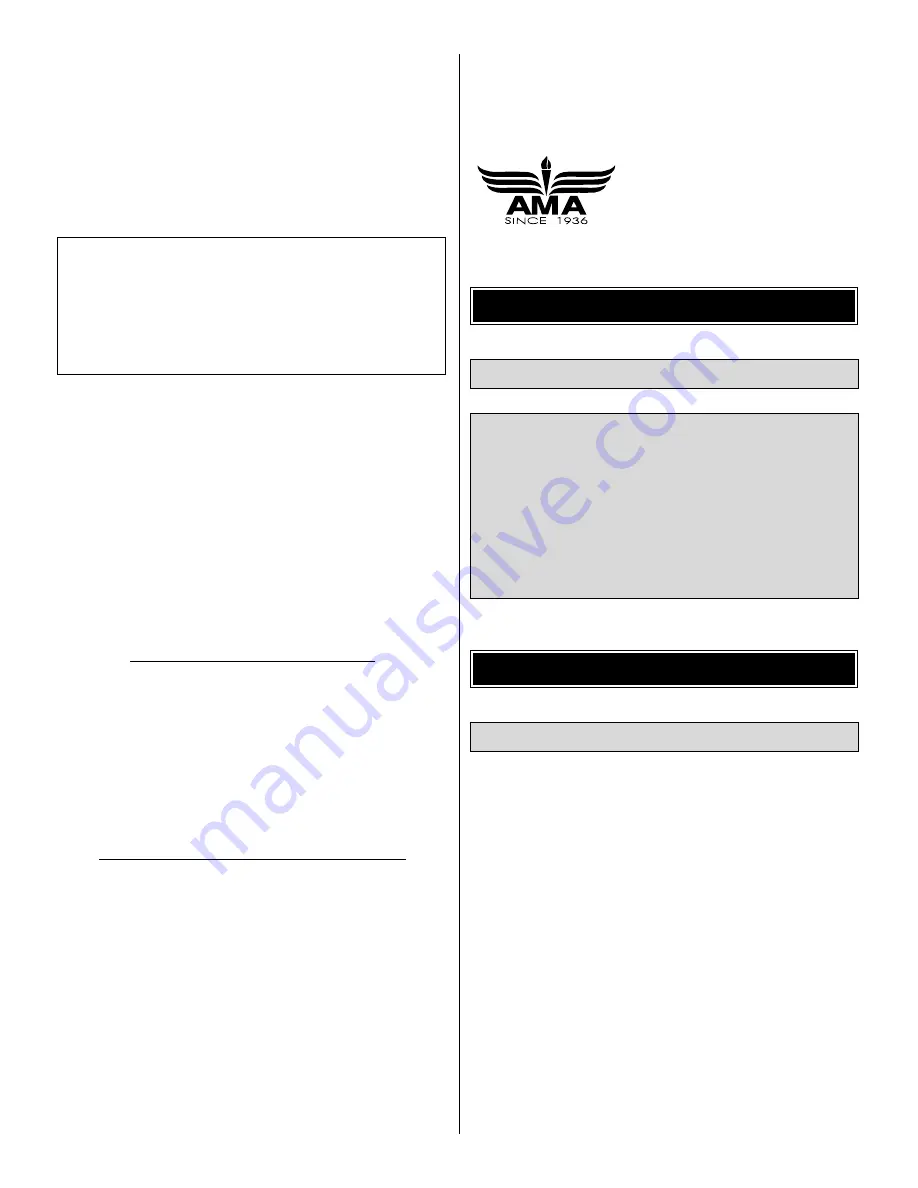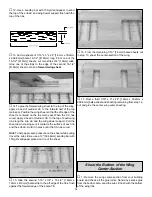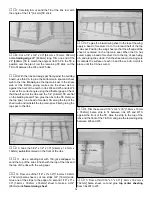
model has remained structurally sound. Be sure to check
clevises or other connectors often and replace them if they
show any signs of wear or fatigue.
7. If you are not already an experienced R/C pilot, you
should fly the model only with the help of a competent,
experienced R/C pilot.
Remember: Take your time and follow the instructions
to end up with a well-built model that is straight
and true.
Before starting to build, compare the parts in this kit
with the Parts List, and note any missing parts. Also
inspect all parts to make sure they are of acceptable
quality. If any parts are missing, broken or defective, or
if you have any questions about building or flying this
airplane, please call us at (217) 398-8970, or e-mail
us at:
If you are contacting us for replacement parts, please be
sure to provide the full kit name (Old Timer 40) and the part
numbers as listed in the Parts List.
You can also check the following web site for the latest
Old Timer 40 updates:
www.greatplanes.com/airplanes/index.html
If you are new to R/C, we recommend that you get the
assistance of an experienced pilot in your R/C club for your
first flights. If you’re not a member of a club, your local hobby
shop has information about clubs in your area whose
membership includes experienced pilots.
In addition to joining an R/C club, we strongly recommend
you join the AMA (Academy of Model Aeronautics). AMA
membership is required to fly at AMA sanctioned clubs.
There are over 2,500 AMA chartered clubs across the
country. Among other benefits, the AMA provides insurance
to its members who fly at sanctioned sites and events.
Additionally, training programs and instructors are available
at AMA club sites to help you get started the right way.
Contact the AMA at the address or toll-free phone
number below:
This is the list of hardware and accessories required to
finish the Old Timer 40. Order numbers are provided in
parentheses and are recognized by most distributors and
hobby shops and are listed for your convenience.
❏
Engine – s
ee “Engine Selection” above
❏
3-Channel with 3 standard servos
❏
(2) 3" Main wheels (GPMQ4225)
❏
(1) 1-1/4" Tail wheel (GPMQ4242)
❏
(1) 2-1/4" Spinner
❏
Propeller (Top Flite
®
Power Point
®
); refer to your
engine’s instructions for proper size.
❏
Medium fuel tubing 2' (GPMQ4131)
❏
(1) 8oz. Fuel tank (GPMQ4103)
❏
1/4" Latex foam rubber padding (HCAQ1000)
❏
Fuelproof paint – s
ee “Painting” section
❏
(2) 3/32" Wheel collar (GPMQ4302)
❏
(4) 3/16" Wheel collar (GPMQ4308)
❏
Switch and Charge Jack Mounting Set (GPMM1000)
❏
(4) Rolls covering film
Hardware & Accessories
ADDITIONAL ITEMS REQUIRED
.30 - .40 cu. in. 2-stroke
.40 - .52 cu. in. 4-stroke
The Old Timer 40 is a large airplane, but is built very light.
When it was test flown, the O.S.
®
.40LA engine provided
plenty of power. It easily cruised around at half throttle.
Using a more powerful engine is not necessary. If you are
installing a 2-stroke engine, an exhaust extension is
required for the muffler to clear the side of the fuselage.
Engine Selection
DECISIONS YOU MUST MAKE
Academy of Model Aeronautics
5151 East Memorial Drive
Muncie, IN 47302
Tele: (800) 435-9262
Fax (765) 741-0057
Or via the Internet at:
http://www.modelaircraft.org
We, as the kit manufacturer, provide you with a top quality
kit and instructions, but ultimately the quality and flyability
of your finished model depends on how you build it;
therefore, we cannot in any way guarantee the
performance of your completed model, and no
representations are expressed or implied as to the
performance or safety of your completed model.
3
Summary of Contents for Old Timer
Page 6: ...6 DIE PATTERNS...
Page 7: ...7 DIE PATTERNS...
Page 44: ...TWO VIEW DRAWING Use copies of this page to plan your trim scheme...
Page 45: ...B C...
Page 46: ...D A...




































